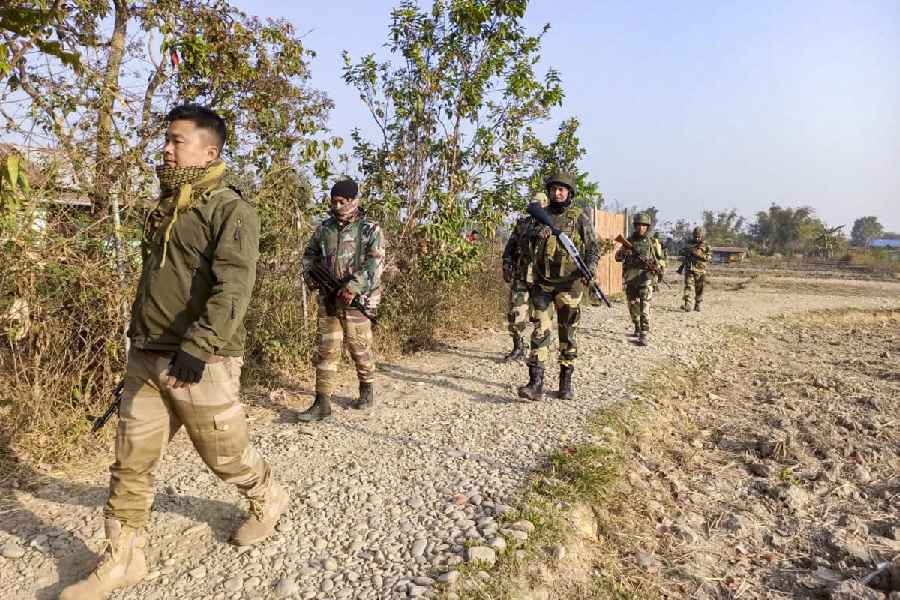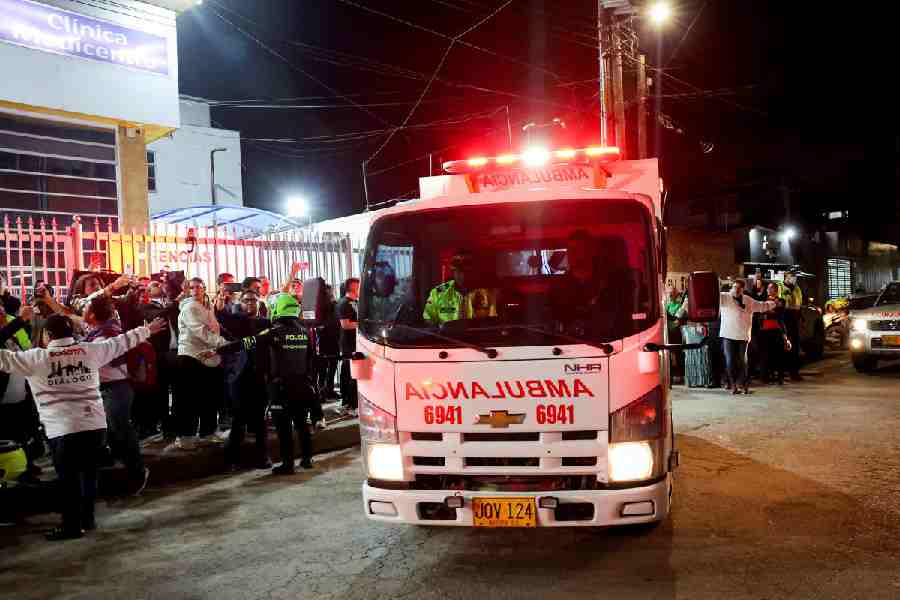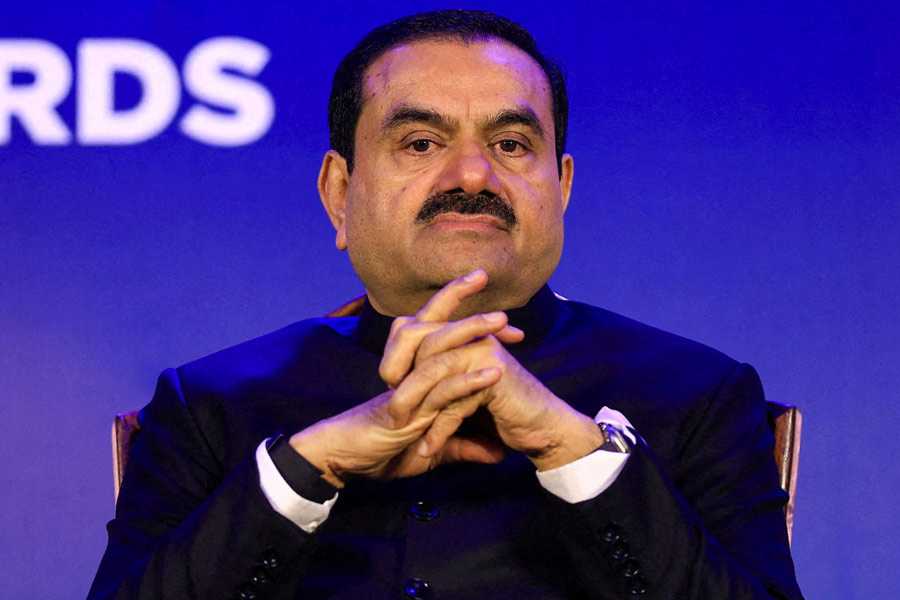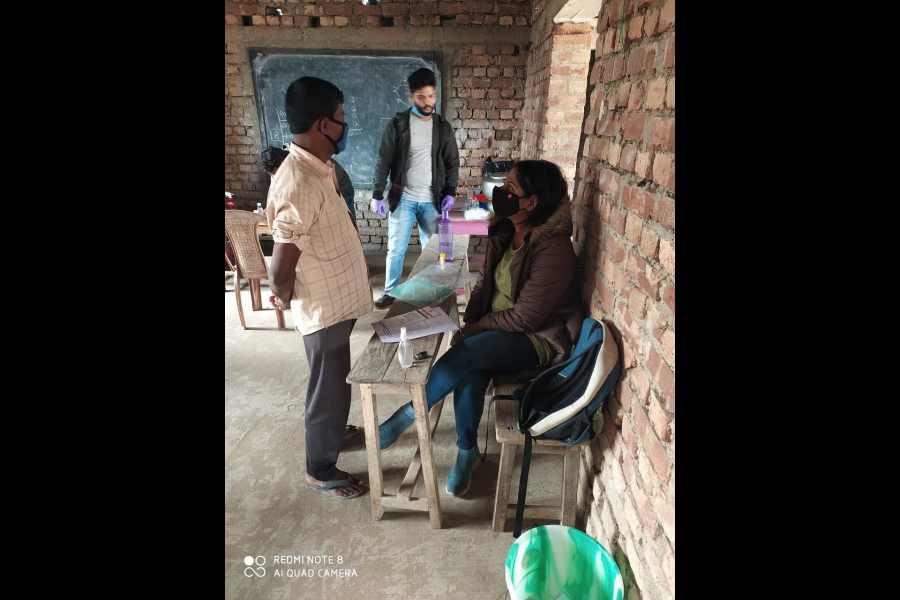At a little past ten in the morning, the wan morning sun began to pick out little groups of women in the village square across from the polling station. They waddled out the lanes in twos and threes and soon they turned into a buzzing congregation, like birds sniffing out the safety of their course. Then one gathered steps and vanished past the ajar iron gates where armed jawans stood. Then another, and another, and then the children of some of them began to tug them forth. The plunge was taken. The women had joined their men; two queues began to curl out the polling booth at Dardpora in Budgam.
Not long after, as the hubbub mounted around the polling hive, a group of youngsters walked up and stood across the jawans at the iron gates. They wore track-suits and gelled hair, their sneakers were slaked with mud; they may have come off a morning’s nets on the cricket field. One of them revealed a voters’ slip in his palm but none of them was going in. “Baayecaaat!” he shouted out and then the others shouted too: “Baaayecaat!!”
The young boycotters stood their vocal dare. The jawans stood opposite, eyeball-to-eyeball, but impassive. Those in Dardpora that wished to vote passed betwixt. Nothing happened.
But that one moment opened the mirror on what has changed about standard election-day procedures in Kashmir, and what has not.
The latter is simple enough. The majority in the Valley remains obdurately averse to turning votary of Indian Parliament. For one reason or another nearly three-fourths will not have their forefingers inked. As in many previous elections, complex factors have dictated Kashmiri truancy, from a deep-rooted sentiment to secede, to fear of social proscription or violent retribution.
The boycott call of Hurriyat (Independence) factions has been effectively winged by shadowy militants who have employed intimidation and terror. Unseen hands have pasted posters across the Valley promising ominous consequences for those that participate. Unknown gunmen have killed close to a score this past month as proof of their intent; these dead include 23 village headmen.
We began the day at the other end of the Srinagar Lok Sabha constituency from Budgam; we began north at Kangan, just below where Sonmarg leaps off into the Kargil heights. We saw, all along the way, some willing voters and many unwilling ones. In rural pockets, there were often humming lines to witness; closer to town, the air turned ghostly. Central Srinagar looked like it had been sent to a day in the morgue. What few votes were cast in town were cast by those ferried to polling stations under security guarantees by local leaders — persuaded pocketborough votes, no more.
Elections, especially parliamentary elections, are not a thing they await in the Valley; it’s a periodic scourge they wish sooner gone. Even those that step out, like the women of Dardpora. “It brings the migraines upon us,” one of them, a school teacher, said, “All this tension even over whether or not to vote, not to speak of the fear lurking everywhere.”
She may well have presaged the day’s omens for after a reasonably peaceful day, violence erupted in parts of downtown Srinagar. Boys came chasing securitymen with stones and angered slogans and retaliatory fire from jawans killed one: Bashir Ahmed, 17, previously resident of Nawakadal, now posted to a coffin. Sudden Death is an established article of the Kashmiri charter.
But much as most things refuse to change, some have. This is how:
I reported for The Telegraph in 1996, a most horrendous enactment of democracy, a bloated vote coaxed on the butt-end of a gun. In saddle at the time was a regime at once besieged and audacious. It lay hemmed by the insurrection of the early 1990s, but it was rock-jawed on banishing the rebellion and conjuring popular rule by decree of the bayonet. Its chieftain was a ram-rod man called General (retired) K.V. Krishna Rao, and the chosen apparatchik of his new deal for Kashmir were soliders. Wherever we went in the Valley that year, we saw soldiers — bivouacked along the highways, like armies awaiting orders for the front, crawling about towns and villages, armed franchise vigilantes stuffed into nature’s remote crevices like hay in barns. We saw them rove their guns and order voters out of their homes, their arms raised, their faces fraught, men, women, elders. We saw them push long queues into polling booths with rifles. Often, to the slow or reluctant mover, with a kick of the jackboot.
In the Soura neighbourhood of Srinagar, we saw a man daring to tear up a ballot paper he had been handed; he was thrashed and bundled off to the army cooler before he could let out a cry. On the high promontory of Tral in Anantnag, we saw a protester being stripped and held to the gun as an example to others of what not to do.
By a little past noon that polling day in 1996, Gen. Krishna Rao’s Raj Bhawan had put out a release claiming close to 60 per cent Kashmiris had voted; it was as farcical a claim as it was fraudulent. The wonder really was how the remaining 40 per cent had managed to escape the mark of Indian democracy.
That story is what has changed in the Kashmir of today. The Kashmiri remains hostile to voting, but India isn’t pushing. And if they come out to cry boycott in the face of the Election Commission (EC), it’s a choice they are being allowed. The boycott cry is an exercise of stronger repudiation than Nota, which the EC has now provided the voter; it’s a rejection of the system from without. The Kashmiri today is able to do that, sans fear of consequences, if he chooses to do it peacefully, as those youngsters in Dardpora did this morning. In 1996, they would have run the risk of becoming Kashmir’s vanished. Today, having had a loud say, they loped along unhindered and sat at the corner teashop, watching co-villagers trickle in to vote.
Srinagar did go to vote today; three fourths of its voters did not. And yet, 26.08 percent is a more democratic statistic than the 60 per cent of 1996 will ever be.










